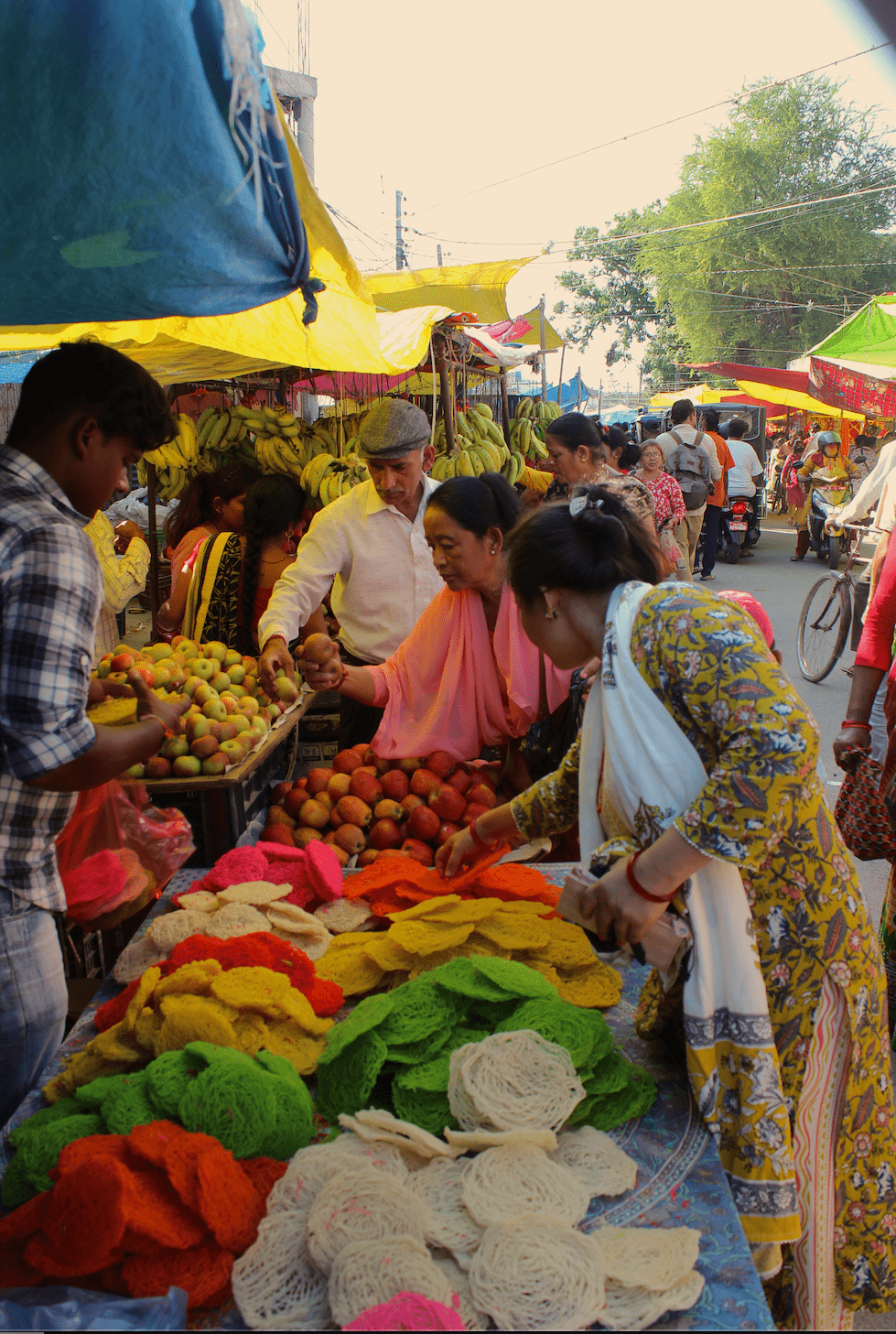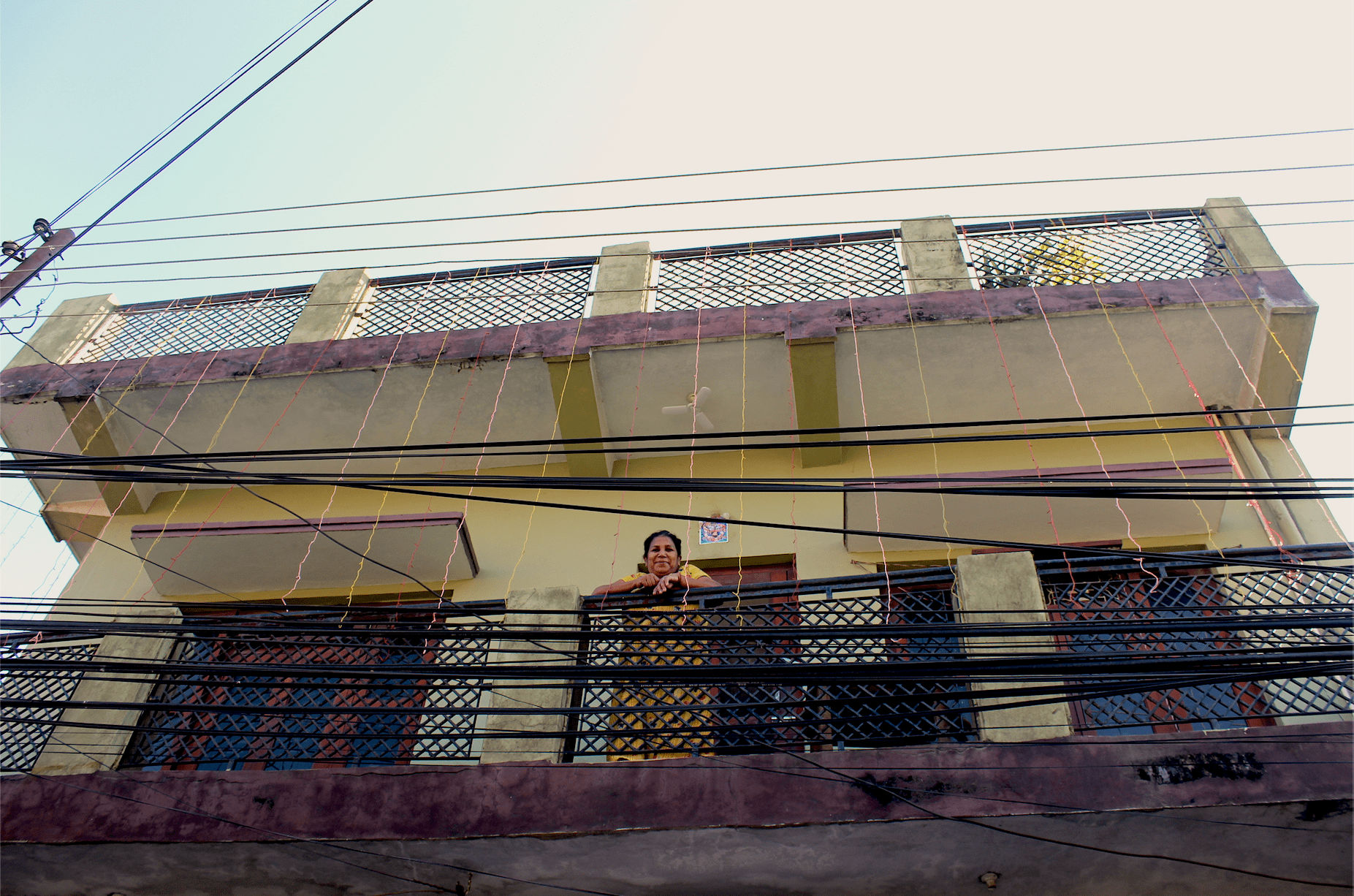small business | local economy | cultural exchange | social nexus

A little ways past the central Bank Road and the Lumbini Eye Hospital and the Bhairahawa Cricket Stadium, lies Haat Bazaar Road named after the bazaar that unravels within this space twice a week on Thursdays and Sundays.
A fixture of the terai, the Haat bazaar is teeming with life and has existed for as long as those that often frequent it can remember.
 Pairs of mothers and daughters haggle stooped over blue tarps as vendors squint up and retaliate, in their best attempts to widen their profit margins.
Pairs of mothers and daughters haggle stooped over blue tarps as vendors squint up and retaliate, in their best attempts to widen their profit margins.

Mouths curve upwards, downwards and split open in excitement, disapproval and to accommodate large bites of food. Expert fingers evaluate fabric and clothes, palms weigh fairness in valuation and discerning eyes rake through attention-seeking products to find those that fit their needs.

Rapid exchanges take place in broken tongues: a cacophony; Awadhi, Bhojpuri, Hindi and Nepali combining with non-human sounds of hissing oil, impatient autos, and various beeps, bells, horns.

Vegetables, fruits, dried fish, meats and spices are trolleyed from neighboring villages, municipalities and even provinces the vendors of which often circulate the surrounding Haat Bazaars living somewhat nomadic traders life reminiscent of the not-so-distant past.

Haat bazaars play an important role in the local economy, providing a place for people to buy and sell goods, and serving as a social gathering place.
Anil Baniya, 42, who got into sweets making at the age of 14, has been serving sweets at the haat bazaar for the last 28 years.
Large companies have also recognized the unique qualities of the Haat Bazaar, most particularly the opportunities to do rural marketing through the already established networks.
Ncell is known for organizing events in various rural haat bazaars, showcasing local talent and inviting artists from all over the country to advertise and turn those that frequent bazaars into Ncell customers. Within the last 10 years, Ncell also has been running a mobile-on-wheels program, visiting villages to teach people from rural areas to use mobile phones. Similarly, Unilever Nepal is documented giving haat bazaar frequentors hair salon experiences, in an effort to convert soap users into shampoo users.

Opportunities for companies to provide sponsorship and advertising, product development and distribution, capacity building, training, and facilitating community development initiatives are plentiful in the Haat Bazaar.
Opportunities for awareness programs, initiatives to disseminate information about public health, vaccination drives and blood banks, medical services are tantamount in this space. Social messages relating to menstruation, education, family planning, nutrition can also be disseminated through skits, speeches and shows that attract large throngs.
Innovative technology of all kinds are showcased in haat bazaars, from the latest ecommerce technology brought to you by a large bank, to a nifty new gadget from China that can chop vegetables with the press of a button.

There are several potential opportunities for partnerships with local governments in haat bazaars, from infrastructure development and rural planning centered around the haat bazaar local economy to using this communal space to disseminate information about recent development and achievements of the local government. Politicians campaign in these spaces, as haat bazaars can also take on the form of town halls to increase political participation within communities.


In addition to goods and services that can be directly offered within the confines of a haat bazaar, these transient markets generate significant footfall that overflow into the businesses that surround them. Barbershops, tailors and butcher shops are patronized and residents look down from their homes observing the teeming crowds, slightly frustrated by the traffic in front of their homes.

Inflation seems to have somewhat skipped over this marketplace, but the effects of inflation have hardly escaped their daily lives.
Manoj Nath Baniya has been selling Surti for 10 rupees a packet for a long time now, for over five years. And Archana Tamang who travels up and down from the Terai to the mid-hills of Gulmi selling bags of Besar has been selling the big packets for 60 rupees for the last 5 years.


Haat Bazaars are known for their competitive prices, often slightly below market price. Farmers are bringing their goods straight to the market and want to take advantage of the large numbers of consumers that come in droves to buy goods for the week, so the decision to sell slightly below market price with the goal of selling more is usually fruitful.

Read More Stories
Kathmandu’s decay: From glorious past to ominous future
Kathmandu: The legend and the legacy Legend about Kathmandus evolution holds that the...
Kathmandu - A crumbling valley!
Valleys and cities should be young, vibrant, inspiring and full of hopes with...
We are currently hiring for multiple positions within our organization. If you are...